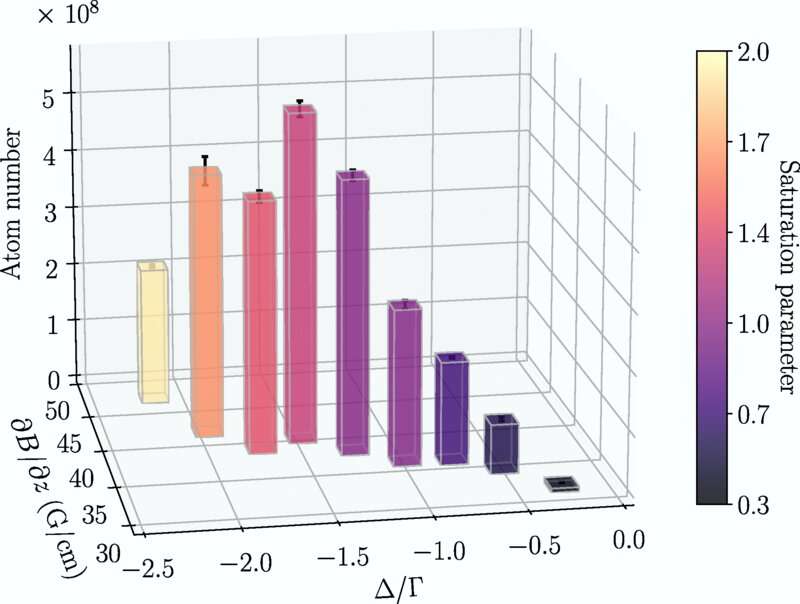July 13, 2022 report
Customized magneto-optical trap allows for cooling indium atoms to near absolute zero

Bob Yirka
news contributor

A team of researchers at the National University of Singapore has developed a customized magneto-optical trap (MOT) to cool indium atoms to near absolute zero. In their paper published in the journal 糖心视频ical Review A, the group describes customizing their MOT and its performance when cooling millions of indium atoms.
Over the past several years, scientists have found that cooling some atomic gases confers unique and sometimes useful properties to the atoms. Using the technique, researchers have created quantum sensors and atomic clocks, for example. To cool atomic gases, scientists use MOTs to cool gas clouds by applying a spatially varying magnetic field and then firing a laser to push the atoms out of their ground state. Unfortunately, this technique has been found to work on only a small number of atomic groups on the periodic table. To date, it has only worked on alkaline-earth and alkali metals, which means that most of the atoms listed on the table have not been tested at extremely cold temperatures.
In this new effort, rather than a ground state transition, the researchers used a transition from a more long-lived metastable state in their MOT. This required modifying it to work with just indium atoms.
Once the reconfiguration was completed, the researchers created a cloud made up of more than 500 million indium-115 atoms in their MOT. They found that their modifications allowed for cooling the atoms to approximately 1 mK for 12.3 seconds, which is about the same amount of time that MOTs have been used to chill other atoms. They suggest it is likely that MOTs in general could be changed to chill other types of atoms as well.
The researchers note that they have not yet used their customized MOT to carry out experiments on the chilled clouds, such as performing quantum measurements, but they see no reason why it would not be feasible. They conclude that their technique could be used by other researchers to open up new avenues of research on atoms in other parts of the periodic table.
Written for you by our author 鈥攖his article is the result of careful human work. We rely on readers like you to keep independent science journalism alive. If this reporting matters to you, please consider a (especially monthly). You'll get an ad-free account as a thank-you.
More information: Xianquan Yu et al, Magneto-optical trapping of a group-III atom, 糖心视频ical Review A (2022).
Journal information: 糖心视频ical Review A
漏 2022 Science X Network





















